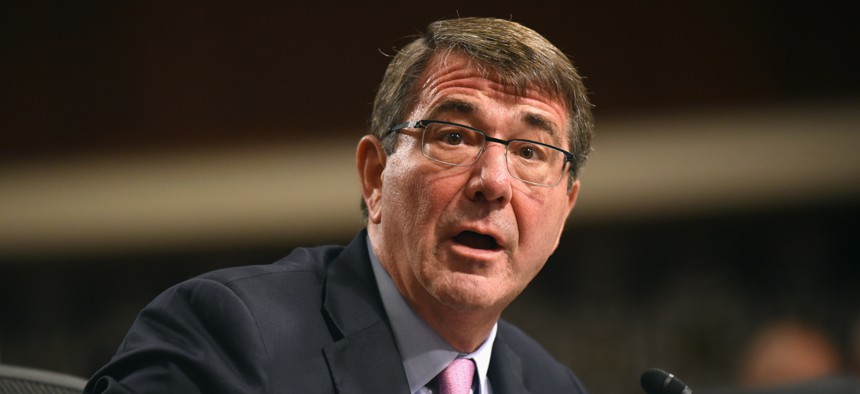
Defense Secretary Ash Carter faces off with Republicans in the Senate Armed Services Committee, Tuesday, Oct. 27, 2016. AP Photo/Kevin Wolf
Trick or Treat: A Pleasant Surprise for the Defense Budget
The debate over the defense budget is not really about defense. But this is the best possible deal.
The details of a surprise budget agreement began leaking out from Congress on Monday—a fitting beginning to the week before Halloween. Much like the Ryan-Murray Bipartisan Budget Agreement of 2013, the new proposal is a two-year deal full of treats for both the defense and non-defense parts of the budget. It increases the Budget Control Act, or BCA, spending caps by $25 billion for defense and $25 billion for non-defense in fiscal year 2016, and increases the caps by $15 billion on each side of the ledger in 2017. But the deal also comes with some tricks—it increases Overseas Contingency Operations, or OCO, war funding by $8 billion for defense and $8 billion for non-defense this fiscal year, and extends the same level of OCO funding next year.
Yes, you read that correctly—it provides $8 billion in additional non-defense spending in the war chest. Tricky! In case you are just tuning in to the budget debate, OCO funding does not count toward the BCA budget caps, making it a loophole both Congress and the Obama administration have exploited in recent years. OCO funding does not actually need to be war-related—Congress and the administration just need to say it is war-related.
So what will Congress do with an additional $8 billion in non-defense OCO funding? The State Department (part of the non-defense budget) already has an OCO request of its own in fiscal 2016 for legitimate war-related needs, but I doubt Congress intends to increase State’s OCO budget much beyond the request. In theory, Congress could use non-defense OCO funding for virtually anything: the Department of Homeland Security, Department of Veterans Affairs, NASA, or the National Institutes of Health, to name a few examples. How the funding is allocated will be up to the appropriators.
For defense, the budget deal means that the national defense part of the budget would see a net increase of $33 billion ($25 billion in the base budget and $8 billion in OCO) above what the BCA budget caps intended for fiscal 2016. Notice I said national defense, not DOD. The defense budget caps apply to the national defense budget (the “050” budget function for geeks). DOD garners the largest share of the national defense budget, roughly 95.5 percent in recent years, but it does not receive all of it. The remaining parts of the national defense budget go primarily to the Department of Energy to fund naval reactors and the upgrade and maintenance of nuclear weapons and associated labs, with smaller amounts of funding for defense-related activities in other government agencies. The actual division of the budget under the revised budget caps will be up to the appropriators.
Related: How Budget Battles National Security
Related: Top Weapons Buyers Say Budget Gridlock Threatens Hundreds of Projects
Compared to President Barack Obama’s budget request and the Republican’s budget proposal in Congress, this deal comes close to providing the total level of defense funding both sides wanted. As shown in the figure below, the president proposed $561 billion in the base national defense budget and $51 billion in supplemental war funding, for a total of $612 billion. The Republican-passed budget calls for $523 billion in base national defense and $89 billion in war funding, for a total equal to the president’s request. The proposed deal offered this week is $607 billion in total national defense, some $5 billion less than both sides wanted.
The fact that both sides wanted the same amount of funding for defense and ended up settling for $5 billion less just reinforces the fact that the debate over the defense budget is not really about defense. The debate is about how to handle the non-defense side of the budget and any budgetary offsets that may be needed, and defense has been held hostage by both sides. Obama has insisted all along that any increase in the defense budget above the budget caps should be matched by an equal increase in non-defense funding. Republicans wanted to increase defense without increasing non-defense using the OCO loophole. The proposed deal comes much closer to the president’s position overall.
In my opinion, this is the best deal for defense anyone could realistically expect. It’s not exactly what the military wanted for 2016, but without this deal the defense budget would surely be much lower, and (perhaps more importantly) the level of budgetary turmoil and uncertainty would be much higher. This deal does not fully resolve the BCA, but it puts the defense budget on a stable footing into the next administration. That is a pleasant surprise for defense—boo!




